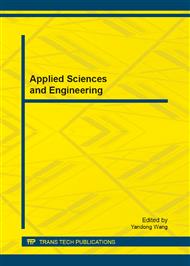p.55
p.60
p.64
p.68
p.73
p.78
p.83
p.89
p.93
Analysis of Turbulent Flow Development Downstream Disturbers with Perforated Plate Flow Conditioner
Abstract:
This article discusses the development and the establishment of turbulent flow downstream of disturbers like a valve 50% open, valve 70% open, Tee and 90° double bend in perpendicular planes. Associated with these disturbers, a perforated plate flow conditioner is installed to examine his performances to produce the fully developed pipe flow as suggested by standards ISO5167 and AGA3. The study focused mainly on the numerical analysis of the velocity contours at several axial stations downstream the disturbers. For the simulation, code CFD Fluent was used. The study of the disturbed flow is examined with three Reynolds numbers. The results show a very good prediction of the CFD code Fluent for the flow development downstream the disturbers and conditioner which makes the code very efficient for conception of a new flow conditioner not described by the standards. It was also found that the valve 50% open could be considered a reference disturber for analyzing the development of turbulent flows. As interesting results, is the effectiveness of the perforated plate to produce the flow developed pipe flow at about z/D=10 downstream the disturber. This result is very important for flow measurement accuracy as suggested by the standards. An experimental study is needed to validate these results.
Info:
Periodical:
Pages:
73-77
Citation:
Online since:
September 2012
Authors:
Price:
Сopyright:
© 2012 Trans Tech Publications Ltd. All Rights Reserved
Share:
Citation:


